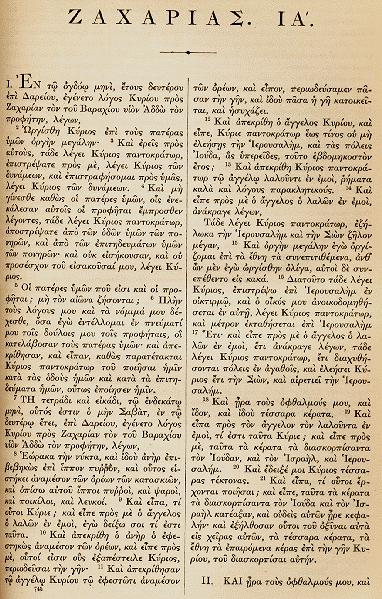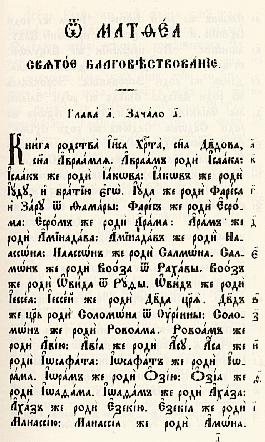
May You Be Blessed by the God of Your Heart |
Ancient Scriptures of the Eastern Orthodox WorldThe Septuagint:
Strictly speaking, the Septuagint is only the ancient Greek translation of the five books of Moses in
the Old Testament, or the Hebrew language Jewish Bible. It was traditionally
thought to have been translated by seventy scholars in Alexandria, Egypt; hence, the name
Septuagint. According to one account found in the Talmud, 72 elders
of Israel were employed by Ptolemy to translate the Torah
into Greek (Megillah 9a).
Translation work had begun by the year 285 BCE. According to writers such as Philo, Josephus, and Aristobulus, the Septuagint began when Philadelphus Ptolemy sent ambassadors to the high priest and king of Israel asking for the best scholars to translate the laws of Moses. The scholars set to work on an island near Alexandria, each working on his own translation. According to Philo, a Hellenist, when all seventy-two scholars chose all the same words in their translations, they verified the inspiration of the translation. To the contrary, the translator of the book of Ecclesiasticus from Hebrew to Greek expressed his misgivings about the Septuagint in his prologue: "For some things uttered in Hebrew, and translated into another tongue, have not the same force in them: and not only these things, but the Law itself, and the Prophets, and the rest of the books, have no small difference when they are spoken in their own language." The Talmud discusses some of the problems with the Septuagint in Megillah 9a. Today, scholars are not certain who translated the prophetic books. When the Church started to assemble the canon of scripture, the Greek speaking churches adopted the Septuagint together with the Received Text of the Koine Greek New Testament as their scriptures.
Although the Alexandrian Greek contains a few dialectual difficulties, the
Greek used 2,000 years ago has not changed very much. The Septuagint is still
the official Bible of the Greek Orthodox Church, although modern translations
are now available. It is also used by biblical scholars to understand how
the Old Testament may have been interpreted anciently. It is also the version
of the Jewish Bible most used by the writers of the New Testament. The
differences found in the Septuagint have often provided the biblical support
Christians needed where none existed in the Hebrew text.
The Old Church Slavonic Bible:This Old Church Slavonic is the language of the traditional Bible of the slavic churches as well as the traditional language of the liturgy. Being an early form of most of today's slavic languages, Old Church Slavonic served the same purposes that Latin served the Roman Catholic Church.In 862 CE, Moravian Prince Rastislav requested Byzantine Emperor Michael III to send missionaries to explain the message of Christianity. After signing an alliance with Moravia, the Emperor sent two missionary brothers familiar with slavic language and customs, Cyril and Methodius. Old Church Slavonic was found in use by Saints Cyril and Methodius, now considered Apostles to slavic lands. Originating from Thessalonica, within the Byzantine Empire, these missionaries devised the Cyrillic alphabet in use today by many of the slavic nations. It was based on the Greek alphabet, but used additional characters to express sounds not used in Greek. Eventually, the liturgy and the Bible was translated into Old Church Slavonic. As Orthodox Christianity entered the other lands of the East, such as Bulgaria, Kiev, and Serbia, the Old Church Slavonic translation travelled as well. Today, the language is strictly a liturgical language. However, being the basis for most modern slavic languages, the Old Church Slavonic may still be used by many. In fact, the text served as the basis for early translations into Czech, Bulgarian, and influenced other slavic translations. Sources: The Septuagint was reproduced from The Greek Septuagint Version, London: Samuel Bagster and Sons, undated. This page presented above is from Zechariah chapter 1. The Old Church Slavonic is from New Testament in Slavonic, reprinted by the United Bible Societies, 1959. The page reproduced above in from Matthew chapter 1.
Return to The Geography of Eastern Orthodoxy |

